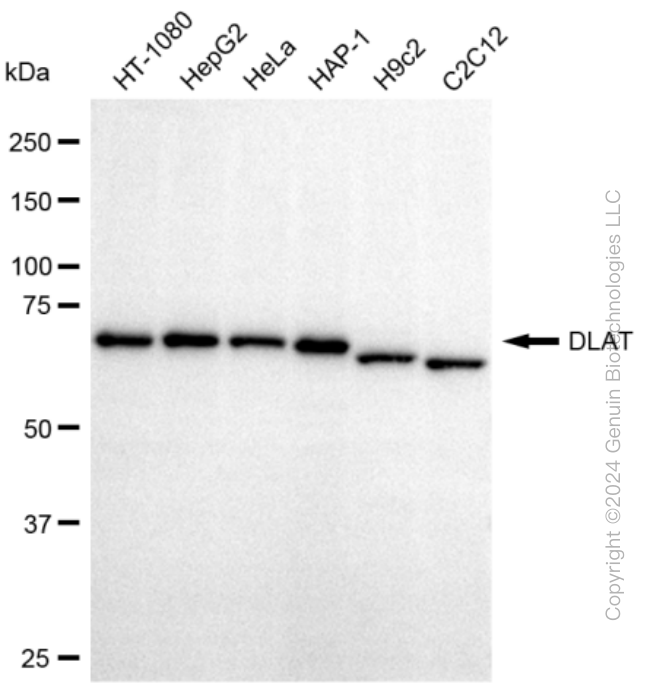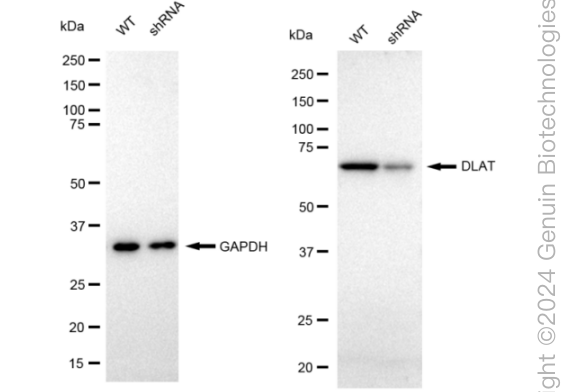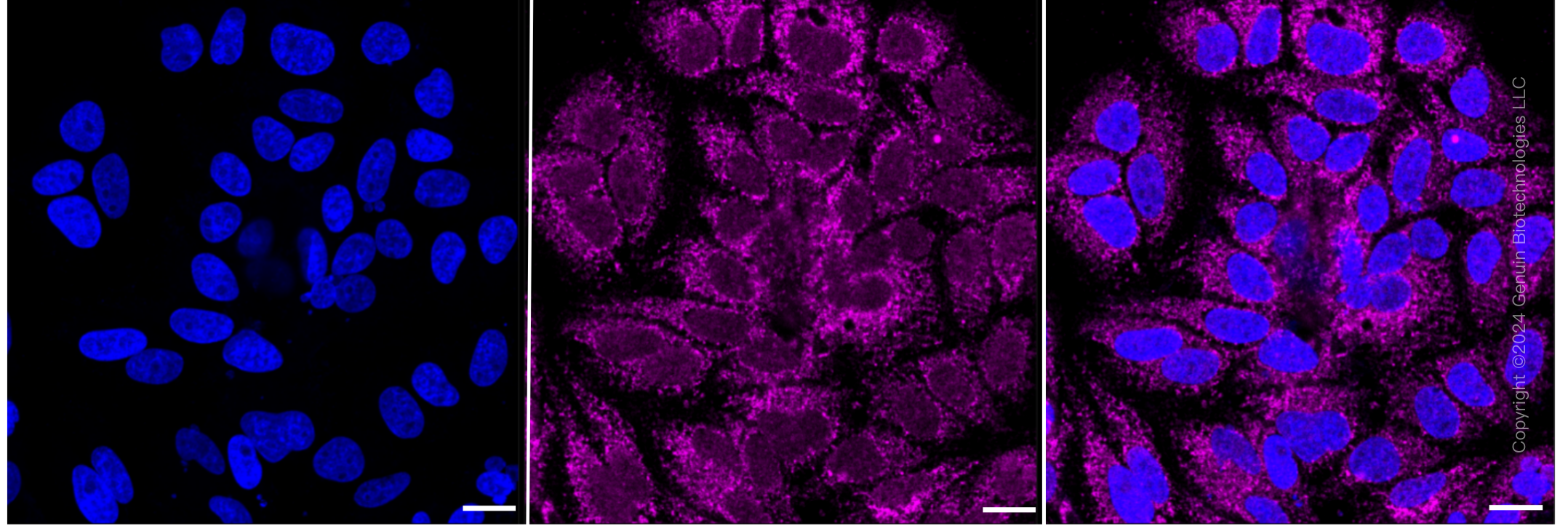KD-Validated Anti-DLAT Rabbit Monoclonal Antibody
Rabbit monoclonal antibody
- SPECIFICATION
- CITATIONS
- PROTOCOLS
- BACKGROUND

Application
| WB, FC, ICC |
|---|---|
| Primary Accession | P10515 |
| Reactivity | Rat, Human, Mouse |
| Clonality | Monoclonal |
| Isotype | Rabbit IgG |
| Clone Names | 23GB805 |
| Calculated MW | Predicted, 69 kDa ; Observed, 71 kDa |
| Gene Name | DLAT |
| Aliases | DLAT; Dihydrolipoamide S-Acetyltransferase; PDC-E2; DLTA; E2; Dihydrolipoyllysine-Residue Acetyltransferase Component Of Pyruvate; Dehydrogenase Complex, Mitochondrial; Dihydrolipoamide Acetyltransferase Component Of Pyruvate Dehydrogenase Complex; 70 KDa Mitochondrial Autoantigen Of Primary Biliary Cirrhosis; E2 Component Of Pyruvate Dehydrogenase Complex; Pyruvate Dehydrogenase Complex Component E2; M2 Antigen Complex 70 KDa Subunit; EC 2.3.1.12; PDCE2; PBC; Dihydrolipoyllysine-Residue Acetyltransferase; EC 2.3.1 |
| Immunogen | A synthesized peptide derived from human DLAT |
| Gene ID | 1737 |
|---|---|
| Other Names | Dihydrolipoyllysine-residue acetyltransferase component of pyruvate dehydrogenase complex, mitochondrial, 2.3.1.12, 70 kDa mitochondrial autoantigen of primary biliary cirrhosis, PBC, Dihydrolipoamide acetyltransferase component of pyruvate dehydrogenase complex, M2 antigen complex 70 kDa subunit, Pyruvate dehydrogenase complex component E2, PDC-E2, PDCE2, DLAT (HGNC:2896), DLTA |
| Name | DLAT (HGNC:2896) |
|---|---|
| Synonyms | DLTA |
| Function | As part of the pyruvate dehydrogenase complex, catalyzes the transfers of an acetyl group to a lipoic acid moiety (Probable). The pyruvate dehydrogenase complex, catalyzes the overall conversion of pyruvate to acetyl-CoA and CO(2), and thereby links cytoplasmic glycolysis and the mitochondrial tricarboxylic acid (TCA) cycle (Probable). |
| Cellular Location | Mitochondrion matrix {ECO:0000250|UniProtKB:P08461} |

Thousands of laboratories across the world have published research that depended on the performance of antibodies from Abcepta to advance their research. Check out links to articles that cite our products in major peer-reviewed journals, organized by research category.
info@abcepta.com, and receive a free "I Love Antibodies" mug.
Provided below are standard protocols that you may find useful for product applications.
If you have used an Abcepta product and would like to share how it has performed, please click on the "Submit Review" button and provide the requested information. Our staff will examine and post your review and contact you if needed.
If you have any additional inquiries please email technical services at tech@abcepta.com.














 Foundational characteristics of cancer include proliferation, angiogenesis, migration, evasion of apoptosis, and cellular immortality. Find key markers for these cellular processes and antibodies to detect them.
Foundational characteristics of cancer include proliferation, angiogenesis, migration, evasion of apoptosis, and cellular immortality. Find key markers for these cellular processes and antibodies to detect them. The SUMOplot™ Analysis Program predicts and scores sumoylation sites in your protein. SUMOylation is a post-translational modification involved in various cellular processes, such as nuclear-cytosolic transport, transcriptional regulation, apoptosis, protein stability, response to stress, and progression through the cell cycle.
The SUMOplot™ Analysis Program predicts and scores sumoylation sites in your protein. SUMOylation is a post-translational modification involved in various cellular processes, such as nuclear-cytosolic transport, transcriptional regulation, apoptosis, protein stability, response to stress, and progression through the cell cycle. The Autophagy Receptor Motif Plotter predicts and scores autophagy receptor binding sites in your protein. Identifying proteins connected to this pathway is critical to understanding the role of autophagy in physiological as well as pathological processes such as development, differentiation, neurodegenerative diseases, stress, infection, and cancer.
The Autophagy Receptor Motif Plotter predicts and scores autophagy receptor binding sites in your protein. Identifying proteins connected to this pathway is critical to understanding the role of autophagy in physiological as well as pathological processes such as development, differentiation, neurodegenerative diseases, stress, infection, and cancer.





